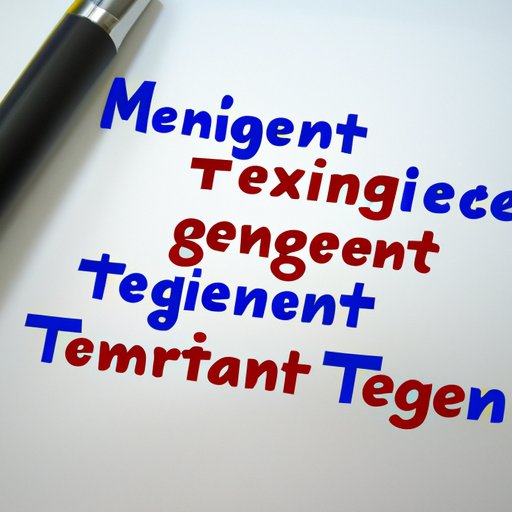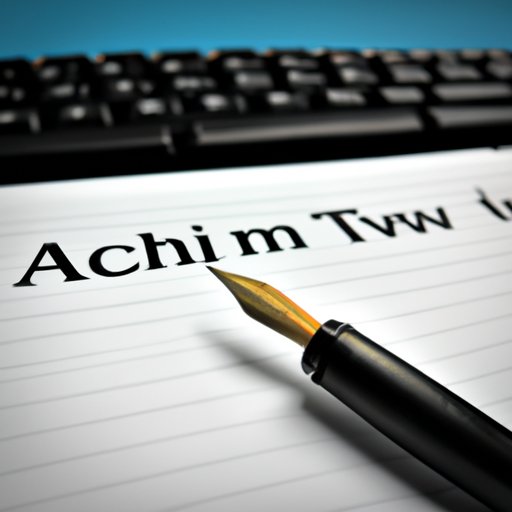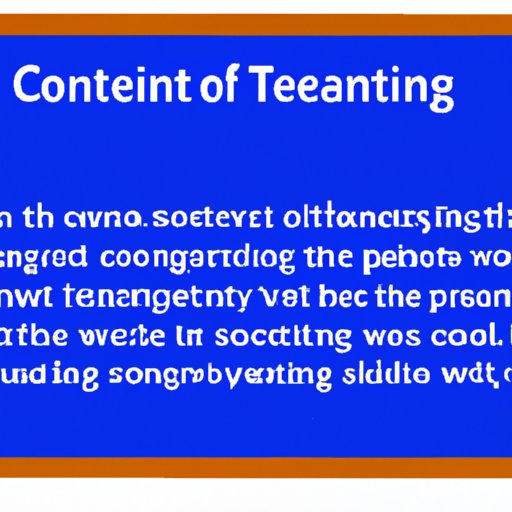Exploring the Purpose of Technical Writing: Defining its Goal
Technical writing is a type of writing that focuses on providing clear, concise, and accurate information about a particular subject or topic. It can be used in a variety of contexts to communicate complex ideas and concepts in a way that is easy to understand. As such, it is essential for anyone who needs to communicate effectively in any field, from engineering to business.
In order to understand the goal of technical writing, it is important to first define what technical writing is. Technical writing is a form of communication that combines research, analysis, and organization of data into a written document that can be used to inform and educate its readers. It is often used to explain complex topics in a straightforward manner, making it useful for both experts and laypeople alike.
The goal of technical writing is to provide clear and accurate information to readers in a format that is easy to understand. This means that technical writing should be well organized, logically structured, and free from errors. In addition, technical writing should be tailored to the audience, as different audiences may have different levels of knowledge and understanding of the topic.
Achieving Clarity Through Technical Writing: Understanding its Purpose
One of the main goals of technical writing is to ensure clarity for the reader. To achieve this goal, it is important to identify the target audience and establish clear communication. Identifying the audience will enable the writer to tailor the writing to their level of understanding and knowledge. Establishing clear communication will help ensure that the message is delivered in a way that is both understandable and effective.
In addition to ensuring clarity, it is also important to provide the reader with useful information. Technical writing should include relevant facts, figures, and data that will help the reader better understand the topic. Furthermore, it should include explanations and definitions of terms and concepts that may be unfamiliar to the reader. By providing useful information, the reader will be able to gain a better understanding of the topic and be able to apply the information to their own work.
What is Technical Writing? Identifying its Objective
There are several types of technical writing, each with its own goal and objective. These include user manuals, product documentation, instructional guides, and online help documentation. Each of these types of writing has its own purpose and objective, but all aim to provide the reader with clear and accurate information.
Examples of technical writing include instruction manuals, research papers, and technical reports. Instruction manuals provide step-by-step instructions for using a product or service. Research papers and technical reports provide detailed information about a particular topic or issue. All of these types of writing require the writer to organize, analyze, and present the information in a way that is easy to understand.
The technical writing process typically involves researching the topic, organizing the information, and then writing the document. The writer must ensure that the information is accurate, up-to-date, and properly structured. The document should also use language that is appropriate for the target audience and should be free from errors. Finally, the document should be proofread and edited before it is published.

Meeting Expectations with Technical Writing: Uncovering its Goal
When creating a technical writing project, it is important to analyze the requirements and create a project plan. This will ensure that all expectations are met and that the document is created in a timely manner. A project plan should include a timeline, resources, and a list of tasks that need to be completed. Following best practices is also important, as this will help ensure that the document is of high quality and meets all requirements.

The Art of Technical Writing: Knowing its Aim
Technical writing is not just about conveying information; it is also about engaging the reader. To do this, it is important to write for the reader, rather than the writer. This means that the language should be clear and easy to read, and the structure should be logical and organized. Additionally, the writer should develop their own unique voice, as this will help the reader connect with the material.
Visuals and graphics are also important in technical writing, as they can help illustrate complex concepts and make the material easier to understand. Images, charts, and diagrams can be used to break up long blocks of text and provide the reader with a visual representation of the material.

Crafting Meaningful Content with Technical Writing: Discovering its Objective
Once the structure and visuals have been established, the next step is to craft meaningful content. This requires research, as the writer must ensure that the information is accurate and up-to-date. Once the research has been conducted, the writer must then structure the content in a way that is both logical and organized. Finally, the content must be edited and revised to ensure that it is free from errors and that it meets the expectations of the reader.
By following these steps, the writer can ensure that the content is meaningful and engaging. This will help the reader better understand the material, as well as provide them with useful information that they can apply to their own work.
Conclusion
Technical writing is an essential form of communication that combines research, analysis, and organization of data into a written document. Its goal is to provide clear and accurate information to readers in a format that is easy to understand. To achieve this goal, writers must identify the target audience, establish clear communication, provide useful information, and craft meaningful content. By following these steps, writers can ensure that their technical writing is effective and achieves its intended goal.
(Note: Is this article not meeting your expectations? Do you have knowledge or insights to share? Unlock new opportunities and expand your reach by joining our authors team. Click Registration to join us and share your expertise with our readers.)
